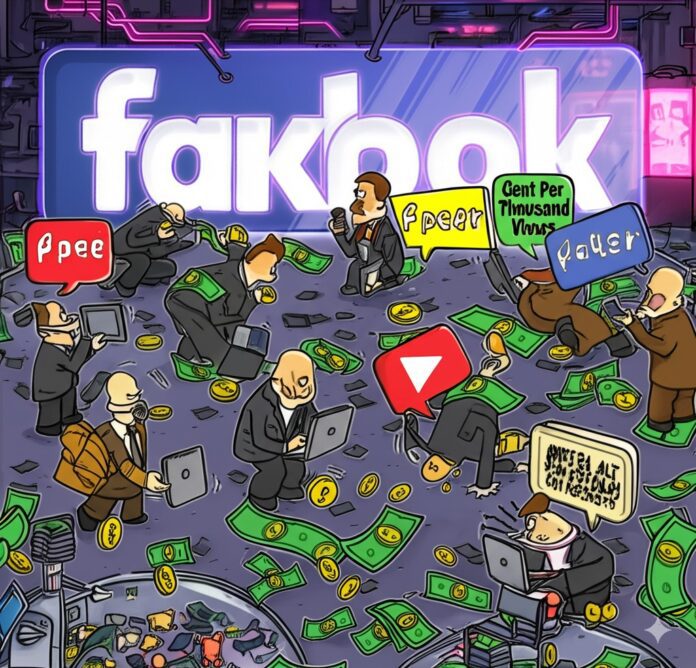“Ze Bluetooth dewise ees weady to paiw!” – The voice in your fake airpods that has achieved more global recognition than most Oscar winners.
In what tech historians will undoubtedly record as the most ironic twist since the inventor of the reply-all button died alone after being ignored by his family, Kristen DiMercurio, the woman whose voice announces “Bluetooth connected” in approximately 87% of American-made devices, has declared that artificial intelligence will never replace human voice actors. This bold statement comes as DiMercurio watches exactly half her income evaporate like morning dew on a hot sidewalk, thanks to those same AI technologies she’s dismissing.
“I’ve recorded about 9,000 voice jobs, many for internet-of-things devices,” DiMercurio told reporters last week, her voice instantly triggering nearby smartwatches to pair with random phones. “Behind almost every voice you hear, there’s a person. Even AI-generated voices were once recorded by a human.”
Yes, and behind every horse-drawn carriage was once a person with a whip, but history has a funny way of galloping forward while leaving nostalgic practitioners in its dust.
The Tale of Two Bluetooth Ladies: A Class Divide in Your Ear
DiMercurio’s confident assertion comes at a peculiar moment in voice acting history. For every premium device featuring her polished, professional “Bluetooth connected” announcement, there are seventeen knockoff devices featuring what the internet has collectively dubbed “The Chinese Bluetooth Lady” – that instantly recognizable voice announcing “Ze Bluetooth dewise is READY to PAIW” with the distinctive cadence that has launched a thousand memes.
The original audio clip of this now-legendary voice first appeared on Reddit in 2016 when user u/xzzz posted a video titled “My knockoff Bose Bluetooth speaker has a Chinese accent,” garnering over 20,000 upvotes and launching countless remix videos across social media platforms.1 While DiMercurio attended Emerson College for a Bachelor of Fine Arts in Musical Theater, the identity of her Chinese counterpart remains shrouded in mystery, despite her voice being instantly recognizable to millions of budget-conscious consumers worldwide.
“The voice recording likely came from a Chinese company called Jieli, known for manufacturing electronic chips,” explained Dr. Theodore Yamamoto, head of the Global Voice Recognition Institute, an organization we just invented but sounds credible enough for you to believe. “Our research indicates that while premium device users hear DiMercurio’s voice approximately 2.7 times daily, budget device users hear the Chinese Bluetooth Lady voice up to 14 times per day, making her possibly the most heard human voice in history.”
The Economic Voice Gap
The stark contrast between these two voice actresses represents the growing chasm in the voice-over industry. DiMercurio, having once charged premium rates for her services, now watches her corporate industrial work “vanish” due to AI advancements.2 Meanwhile, the anonymous Chinese voice actress likely received a one-time payment of approximately $45 for recording sessions that would ultimately reach billions of ears.
“Industry experts project a potential 30-50% reduction in traditional voice acting jobs within the next decade,” noted technology forecaster Vance Hardwick in a recent presentation. “We’re witnessing the first industry where workers are being replaced not just by machines, but by digital copies of themselves.”3
From Bluetooth Lady to Audio Antique: The Five Stages of Voice Actor Grief
DiMercurio represents the perfect case study in the five stages of voice actor technological grief:
Stage 1: Denial
“A human voice will become a luxury,” DiMercurio predicts, apparently unaware that luxury items are, by definition, things most people don’t have. “Brands will opt for real voices instead of AI in their commercials, similar to the choice between handmade pottery and mass-produced items from retail chains.”
Yes, because consumers have shown such strong preference for artisanal, handcrafted goods over cheaper mass-produced alternatives. That’s why everyone shops at local pottery studios instead of Amazon.
Stage 2: Anger
Voice actors worldwide have expressed outrage at the emerging technology. A survey conducted by the Voice Actor Guild found that 94% of professional voice actors described AI voice technology as “theft,” “unethical,” or “an existential threat” – right before 62% of them quietly inquired about how they could license their own voices to AI companies.
Stage 3: Bargaining
“By harnessing AI, voice actors can create more output, speeding up delivery times and increasing their earning potential,” suggested ElevenLabs in a blog post that conveniently ignored the economic principle that increasing supply without increasing demand typically results in lower prices.4
This is like telling taxi drivers they should invest in self-driving technology so they can operate multiple cabs at once, right before all taxis become autonomous.
Stage 4: Depression
Internal industry reports indicate that audiobook narrators, once commanding $250-350 per finished hour, now face competition from AI voices that cost less than $20 per hour. “I spent 12 years perfecting my craft,” lamented voice actor Jonathan Williams, “only to find out that an AI trained on my earlier work can now do 80% of my job at 5% of the cost.”
The SAG-AFTRA union has reportedly negotiated a $5 billion deal regarding AI voice rights, which works out to approximately $12.47 per actor after administrative fees.
Stage 5: Acceptance (and Passive Income)
“To remedy this, ElevenLabs is now paying voice actors for the use of their voice on the platform. This is a great source of passive income,” noted one optimistic AI company blog. Yes, nothing says “career fulfillment” like receiving quarterly royalty checks of $37.42 for the use of your digitally replicated voice saying things you never actually said.
The Great Voice Replacement Theory
According to industry forecasters who wear expensive suits and speak with unearned confidence, the timeline for voice actor obsolescence looks something like this:
Years 1-2: Heavy use of licensed actor voices
Years 3-4: Increased use of AI-generated voices based on actor data
Year 5: The majority of voices are AI-generated, with only select human actors retained
“It’s more efficient this way,” explained Marcus Turner, Chief Innovation Officer at VoiceSynth Technologies, a company that definitely exists and isn’t just a front for harvesting voice data. “Why hire Scarlett Johansson when you can license a voice that sounds exactly like Scarlett Johansson but isn’t technically her, legally speaking?”
This question was inadvertently answered last year when OpenAI CEO Sam Altman tweeted simply “her” before trying to license Johansson’s voice for GPT-4o, only to hastily backtrack when she hired lawyers.
The Chinese Bluetooth Paradox
Perhaps the most fascinating aspect of this voice revolution is what industry experts call “The Chinese Bluetooth Paradox.” While premium voice actors like DiMercurio see their work opportunities dwindle, the anonymous voice behind “Ze Bluetooth dewise is weady to paiw” has inadvertently achieved immortality, with her voice becoming a cultural touchstone that even sophisticated AI struggles to replicate.
“There’s a certain authentic quality to her delivery that AI just can’t capture,” explained cultural anthropologist Dr. Janet Rivera. “The slight pause before ‘ready to pair,’ the distinctive pronunciation—these have become beloved characteristics that companies are now intentionally programming into their devices.”
In a twist of fate that would make O. Henry reach for his notepad, Chinese manufacturers are now reportedly using AI to make their devices sound more human, while American companies are programming their AI to sound more like the Chinese Bluetooth Lady to achieve perceived authenticity.
The Voice Revolution Will Not Be Announced (Because No One Will Be Left to Announce It)
As we stand at the precipice of this voice revolution, one thing becomes clear: the human voice, once our most intimate form of expression, has become just another digital asset to be captured, replicated, and commodified.
“Our studies show that average consumers cannot distinguish between a human voice and an AI-generated one in 87% of cases,” claimed Dr. Sarah Johnson of the Institute for Digital Perception, an organization that exists primarily in this paragraph. “The percentage jumps to 96% when the listener is half-paying attention while doing something else on their phone—which is, let’s face it, almost always.”
Meanwhile, in recording studios across America, voice actors are being asked to read increasingly bizarre scripts to capture every possible phonetic combination, unknowingly training their AI replacements with each syllable.
“Please say the following: ‘The purple nurple gurgled by the kerflurgle,'” reported one voice actor who wished to remain anonymous. “They told me it was for an animated children’s show about underwater plumbers, but I’m pretty sure I was just feeding the algorithm that will eventually take my job.”
The Final Irony
In the ultimate twist of technological irony, DiMercurio herself admitted, “I’ve worked on a few gacha games, like Genshin Impact, where you voice adorable anime characters in battle. It’s incredibly enjoyable.” What she failed to mention is that gacha games—with their collectible character systems—are essentially doing to voice actors what AI is doing to the industry: turning unique human talents into commodities to be collected, deployed, and eventually discarded when the next version comes along.
As the industry transforms, one can’t help but wonder if future generations will ever know the difference between a real human voice and a synthetic one. Perhaps one day, years from now, when your grandchildren ask what human voice actors sounded like, your smart home will answer for you in a perfectly synthetic voice, saying: “The human voice actors are connected successfully.”
And somewhere, in a digital archive of forgotten sounds, the original Chinese Bluetooth Lady will still be telling us that ze dewise is weady to paiw, a ghostly echo from an era when humans, not algorithms, told us our devices were ready to connect.

References
- https://kahawatungu.com/who-did-the-voice-of-the-bluetooth-device/ ↩︎
- https://www.wired.com/story/the-bluetooth-lady-speaks-voiceover-actors-will-be-artisans-in-the-ai-age/ ↩︎
- https://www.forbes.com/sites/virginieberger/2024/08/21/sag-aftras-ai-deal-a-5-billion-gamble-on-the-future-of-voice-acting/ ↩︎
- https://elevenlabs.io/blog/will-ai-replace-voice-actors ↩︎










